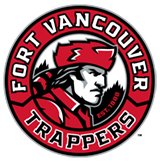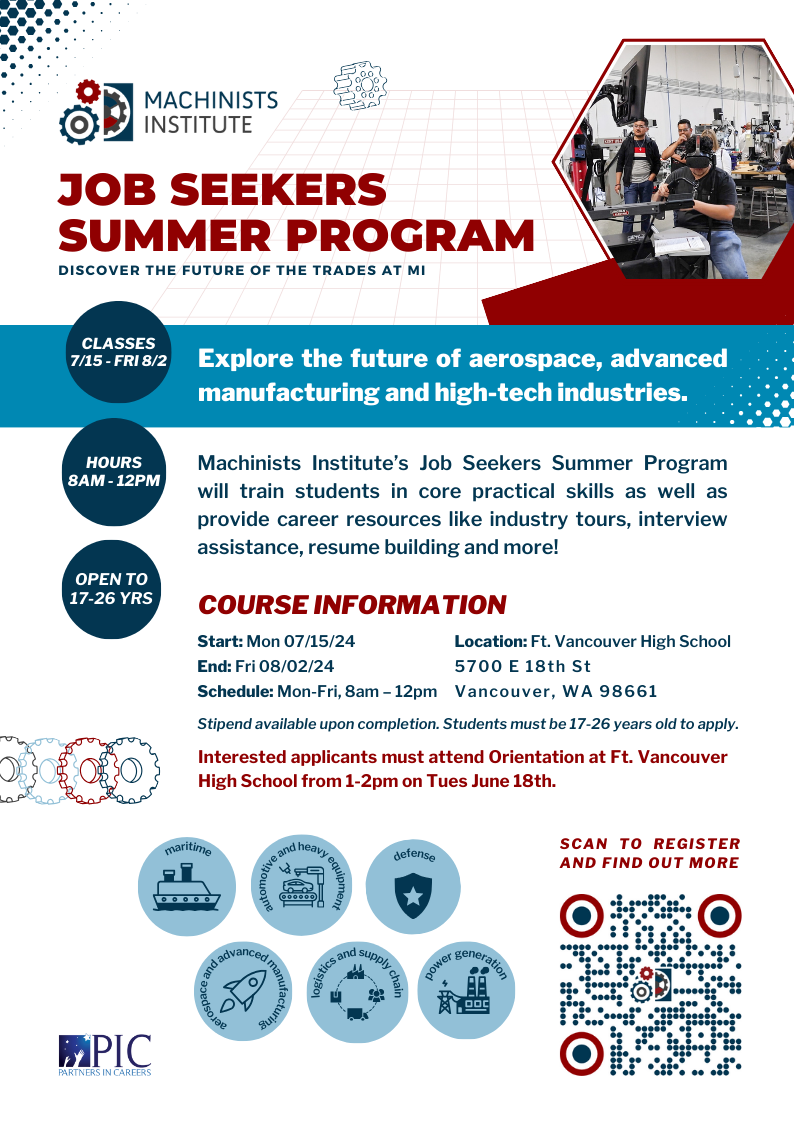Internships are a great way to connect high school students to potential career pathways. Students participate in real-world experiences while making connections between their school courses and practical applications. This summer VPS, Partners in Careers, and 17 local businesses hosted 20 students in work based learning! There was a wide variety of worksites and pathways to explore from local homebuilder, Holt Homes to Seattle-based coding company TechSmart. Students performed an amalgam of tasks ranging from reading blueprints to learning how to tie rebar. Companies big, medium and small participated because there’s a place for everyone at the table!
Fort Vancouver High School student, Nabaa Wali, now a high school junior spent her time at the Port of Vancouver interning for the Director of Economic Development, Mike Bomar. She had such a fantastic experience that she wrote a blog about it below (without being asked) to share with other worksites and students. Prior to starting the internship, students received job readiness training and developed a training plan so the student and worksite shared a common goal and understood the expectations. Nabaa’s supervisor, Mike Bomar said, “We have been so pleased with Nabaa, her great attitude, work ethic, and passion for learning.” Other surveyed worksites reflected the same sentiment.
In the words of another VPS intern his biggest takeaway from the internship was “the community and great people giving good humble advice.” Internships provide an appreciation for your community and a chance to pay it forward. If your company is interested in hosting an intern, please contact tracey.scharmann@vansd.org and please keep reading to obtain a better understanding of what Nabaa learned at the Port of Vancouver.
Why the Port of Vancouver? By Nabaa Wali
It’s a good question to consider when looking for an internship. I never knew about the port until I heard about it from Partners in Careers in the VPS internship program. All I knew was there is shipping that takes place globally and that most large companies use ports to ship their products for many different reasons. I didn’t understand how the port contributed to our daily lives, perhaps that is because I have never dug deeper into what ports do with curiosity until my internship.
The Port of Vancouver specializes in marine and industrial business, connecting markets from Asia and South America to places as far away as the US midcontinent and Canada. Recently the port’s number one priority has been the Terminal 1 project which is creating a fun, destination waterfront for the region. In addition, the port works on projects like the replacement of the 1-5 interstate bridge and other key transportation projects around the region. Not forgetting about the environment, the port has taken on habitat management, clean air, and a climate action plan by including it in their environment approach. The Port of Vancouver also provides tours (virtual for now) so the public can see what happens behind the secured gates.
How the Port Connects with Our Daily Life?
Large companies use ships, trains, and trucks to move their products. One of these companies is Amazon, the world’s largest online retailer offering fast delivery times. This is a great convenience but not everyone takes the time to look at it and see what their orders go through before arriving at their door (or at least I never took the time to research it). Interning at the port helped me understand the behind-the-scenes process and the amount of work that goes into creating and moving products. To the buyer, it happens fast but it’s a very intricate process with lots of moving parts. Fun fact: your order gets put in a waiting delivery truck depending on the shipping option you choose.
The process of shipping doesn’t stop at orders. It’s interesting to think about some people’s daily household goods (like kitty litter and make-up) and the path that the raw materials used as ingredients had to take to become products and how the port is part of that process. Make-up and kitty litter have a common ingredient that is bentonite clay. Bentonite clay is an “active protective layer of geosynthetic clay liners.” It’s made of volcanic ash. It is used in kitty litter to absorb odor. In make-up, it is used in facial products to absorb toxins. Since bentonite is used in many applications, it takes a process that involves cargo. The main ingredients get shipped back and forth until they’re finally one finished product that the consumer is able to buy. This long process is part of the supply chain because it goes through different steps to become the final product we buy and use. Understanding the process was fun to learn because now I can understand how the port contributes to the things we use in our daily lives.
Being an intern at the port is really fun. Think of it like going behind the scenes of things that happen in our day-to-day lives. Learning about the way companies are able to deliver our orders in as little as two days and how in a short amount of time, a lot of work is put in, yet from our point of view it’s like magic; the items appear at our front doors in no time. When it comes to make-up and kitty litter, I would have never thought these two very different items had something in common. There is so much more to learn at the port and amazing projects are being worked on.
VPS and Partners in Careers helped me choose an internship that fit my interest and it was a great opportunity. An internship gives you more knowledge, introduces you to professionals and new experiences, as well as provides a great way to learn more about yourself to see what you like and what fits your interests. As a high school student, we get asked what we want to do. Most of the time the answer is, “I don’t know” and that’s totally normal because we don’t have a lot of experience in the outside world. Having an internship really helps. Through internships, volunteering, and joining clubs it gives us the opportunity to learn more about what we like and dislike and to get a feel of what we want to do after high school.
Blog was edited by Tracey Scharmann.


